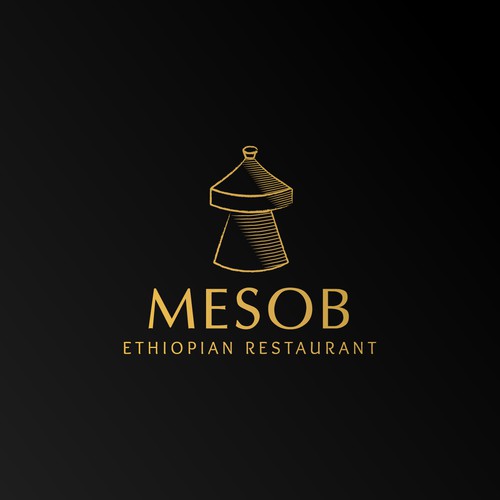Ethiopian Restaurant with best arrangments ofn2024
Why It’s Special:
Ethiopian restaurants offer a unique dining experience that is deeply rooted in tradition, culture, and community. Unlike many other cuisines, Ethiopian food is typically eaten communally, with diners sharing large platters of various dishes, all served on a base of injera—a soft, spongy flatbread made from teff flour. This communal style of eating fosters a sense of togetherness and allows diners to sample a wide array of flavors and textures in one meal.read more
What sets Ethiopian cuisine apart is its distinct use of spices and herbs, which create rich, aromatic dishes that are both flavorful and satisfying. Staples such as lentils, chickpeas, and various vegetables are often stewed with berbere (a spice blend that includes chili peppers, garlic, ginger, basil, and other spices) or mitmita (a hot spice blend), giving the food its characteristic taste. The experience is further enhanced by the absence of utensils—diners use pieces of injera to scoop up the food, adding to the authenticity of the meal.

Special Items:
Ethiopian restaurant menus typically feature a variety of vegetarian and meat-based dishes, catering to diverse palates. Some of the standout items include:
- Doro Wat: A spicy chicken stew made with berbere and niter kibbeh (spiced clarified butter), slow-cooked with onions and hard-boiled eggs. It’s one of the most popular dishes in Ethiopian cuisine.
- Kitfo: Minced raw beef seasoned with mitmita and niter kibbeh, often served with a side of ayib (Ethiopian cottage cheese) and gomen (collard greens). It can be served raw, lightly cooked (leb leb), or fully cooked.
- Misir Wot: A hearty lentil stew made with red lentils, onions, garlic, and a generous amount of berbere. It’s a staple vegetarian dish that’s both flavorful and nutritious.
- Shiro: A chickpea flour stew simmered with minced onions, garlic, and berbere, creating a creamy and rich dish that pairs perfectly with injera.
- Tibs: Sautéed meat (beef, lamb, or goat) cooked with onions, peppers, and a blend of spices. It’s a versatile dish that can range from mild to spicy, depending on the diner’s preference.
Prices Table:
| Item | Price (USD) |
|---|---|
| Doro Wat | $14.99 |
| Kitfo | $16.99 |
| Misir Wot | $12.99 |
| Shiro | $11.99 |
| Tibs | $15.99 |
Caption: A selection of traditional Ethiopian dishes with their prices.
Calories and Nutrition in Detail:
Ethiopian cuisine is known for its balanced nutritional profile, often incorporating a variety of proteins, fibers, and essential vitamins and minerals. Below is a detailed nutritional breakdown of some popular dishes:
- Doro Wat:
- Calories: 520 kcal
- Fat: 35g
- Carbohydrates: 15g
- Protein: 35g
- Fiber: 4g
- Sodium: 800mg
- Kitfo (Raw):
- Calories: 450 kcal
- Fat: 30g
- Carbohydrates: 5g
- Protein: 38g
- Fiber: 2g
- Sodium: 450mg
- Misir Wot:
- Calories: 380 kcal
- Fat: 12g
- Carbohydrates: 45g
- Protein: 18g
- Fiber: 10g
- Sodium: 700mg
- Shiro:
- Calories: 340 kcal
- Fat: 10g
- Carbohydrates: 45g
- Protein: 14g
- Fiber: 8g
- Sodium: 680mg
- Tibs:
- Calories: 520 kcal
- Fat: 28g
- Carbohydrates: 10g
- Protein: 45g
- Fiber: 5g
- Sodium: 750mg
Serving Style:
The serving style in an Ethiopian restaurant is distinctive and deeply cultural. Dishes are typically presented on a large, round tray covered with injera, which acts both as a base and an edible utensil. The various dishes are placed directly on the injera, and additional rolls of injera are served on the side. The communal aspect of the meal encourages sharing, making it an interactive dining experience. The presentation is vibrant, with the rich colors of the stews and sautéed meats contrasting beautifully with the pale injera.
Dining at an Ethiopian restaurant is also a sensory experience—guests are treated to the sights, smells, and tastes of a cuisine that is both exotic and comforting. The absence of utensils enhances the tactile aspect of the meal, and the communal dining style fosters a sense of community and togetherness.
Closing and Opening Time Table:
| Day | Opening Time | Closing Time |
|---|---|---|
| Monday | 11:00 AM | 10:00 PM |
| Tuesday | 11:00 AM | 10:00 PM |
| Wednesday | 11:00 AM | 10:00 PM |
| Thursday | 11:00 AM | 10:00 PM |
| Friday | 11:00 AM | 11:00 PM |
| Saturday | 11:00 AM | 11:00 PM |
| Sunday | 12:00 PM | 9:00 PM |
Caption: Operating hours of a typical Ethiopian restaurant, accommodating both lunch and dinner.
Whether you are new to Ethiopian cuisine or a seasoned fan, dining at an Ethiopian restaurant is an experience that goes beyond the food—it’s a cultural journey that offers a taste of tradition, community, and hospitality. The combination of robust flavors, healthy ingredients, and the unique communal dining style makes Ethiopian restaurants a must-visit for food lovers looking to expand their culinary horizons.






